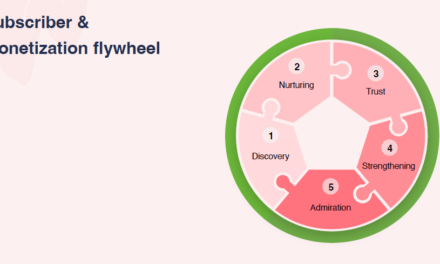There are many theories and data sets that should be incorporated into your marketing strategy. You need an intimate understanding of your industry, a knowledge of who your target customer is and what their strongest needs and wants are, and data on how your previous campaigns have fared.
But too often, especially in the burgeoning world of big data, it’s easy to get bogged down by quantitative information—the type of data that can be objectively reduced to number-based conclusions. This data is important because it shows us unbiased, unfiltered information about our world, but it can be difficult to interpret because it doesn’t always tell a straightforward story.
The type of data marketers should be paying closer attention to is qualitative data, which tend to be based on subjective factors like emotional experience and behavior. By monitoring this user behavior and forming conclusions based on these interactions, you can better understand your marketing position and improve the direction and execution of your campaigns.
Quantitative vs. Qualitative Data in Marketing
Few marketers would argue against the importance of data in making decisions, but most marketers have a preference for one type of data: either quantitative or qualitative. Each have their own advantages and disadvantages: quantitative data is more objective but harder to interpret, while qualitative data can offer more psychologically important insights at the cost of less universal application.
The truth is, both quantitative and qualitative data are important and useful for any marketing campaign. User behavior, while largely determined through qualitative approaches, can have quantitative elements, but its importance extends beyond either category of data. Understanding user behavior, no matter which approach you favor generally, can make or break your overall campaign intentions.
The Importance of User Experience
As a marketer, you might have seen the results of an inbound campaign and thought it to be successful based on the number of people who visited your site. Obviously, the more people who visit your site, the more chances you’ll have at getting conversions, and the more revenue you’ll be able to generate, so it stands to reason that more visitors is better.
However, there are some key qualitative questions that metrics like “site visits” cannot answer. They cannot tell you why a person chose to visit your site, or how a person chose to access your site, or what that user did when he/she got there. For all you know, people were clicking your ad because of its color scheme, not because of its content, and when they got to your site they were turned off by the off-kilter navigation.
How to Analyze User Behavior
As you might imagine, there are a plethora of tools available to help you measure and dissect the average user experience or user behavior associated with your online presence. Some of these are free, while others might cost you depending on your needs.
Heat Maps–Heat maps are interactive displays that show you how users interact with your site (or advertisement). By tracking exactly where users scroll or look on the individual pages on your site, you can form abstract conclusions about the most and least effective elements of your online presence. Generally, heat maps can be added on to your existing site without much of a problem, though they will cost a bit of money. Options like Crazy Egg are relatively inexpensive and give you all the basic functionality you’ll need.
Google Analytics–Google Analytics is known for the sheer volume of quantitative data it can give you on your site, but too many people focus on the surface-level conclusions: how many people are visiting your site and what pages they look at while they’re there. Look a little deeper with the Behavior Flow section to uncover more qualitative conclusions about your visitors’ behaviors. Here, you’ll be able to see the general flow of users once they get to your site, and form conclusions about the factors responsible for this behavior.
Surveys–In the hyper-evolved world of technology, surveys seem somewhat antiquated. However, they can be incredibly valuable in uncovering the thought processes, beliefs, and emotional experiences of your users. Free and relatively inexpensive tools like Survey Monkey allow you to create your own surveys and integrate them into your site however you see fit. Be sure to ask plenty of open-ended questions; only a minority of your users will fill the surveys out, but the insights you draw from these extended responses will be far more valuable than any number-based data you collect.
Regardless of what approach you use or how you incorporate your findings into real adjustments to your marketing strategy, understanding your users’ behavior is the most important step in developing a successful long-term campaign. Treat your users well and they’ll support you, but if you neglect them, the results shouldn’t be surprising.






